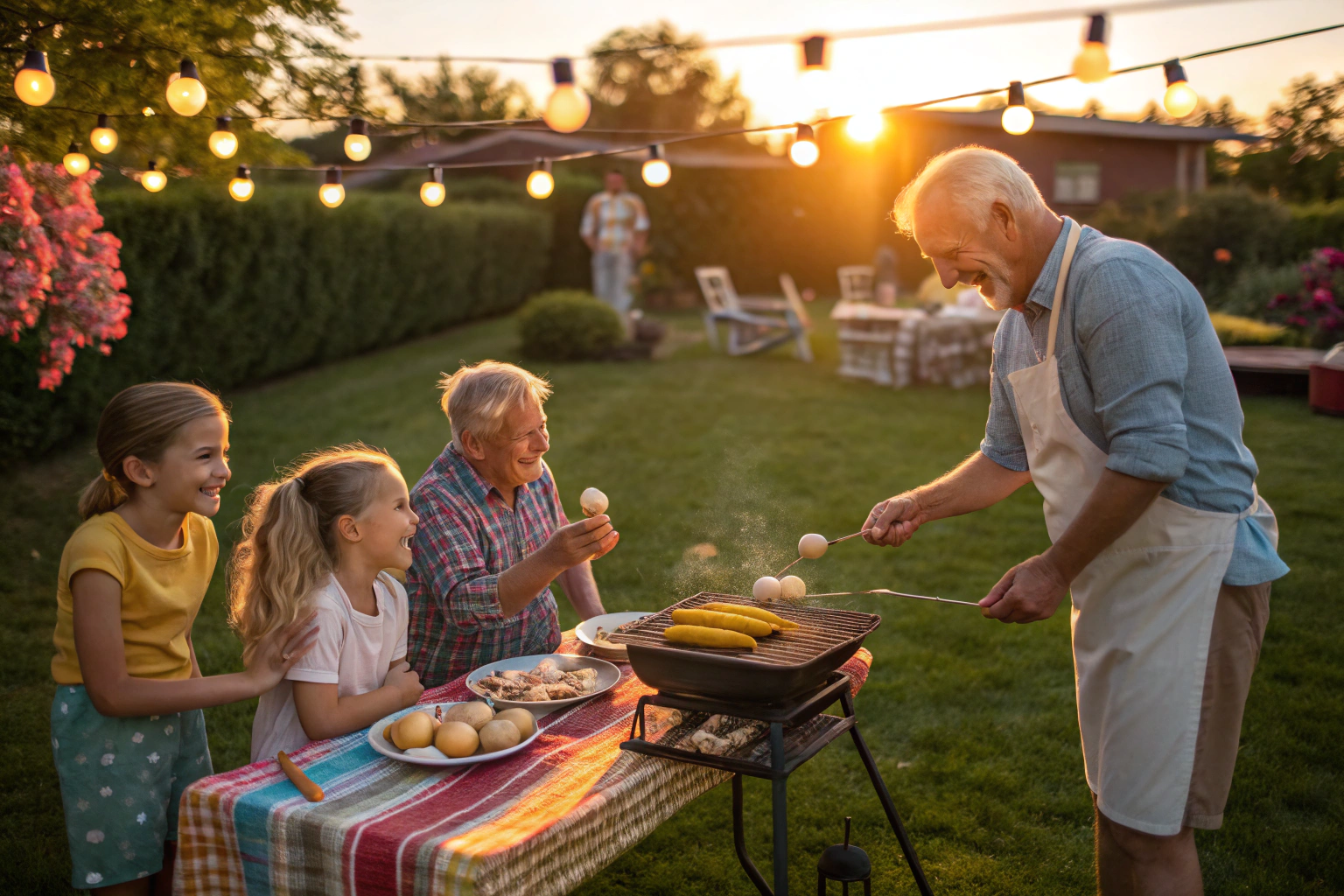Summer traditions from around the world create magical experiences that connect families, communities, and cultures across generations. While each region has developed unique ways to celebrate the warmest months, these traditions share common themes of joy, community, and appreciation for the abundant daylight during the summer season.
The Summer Solstice: Foundation of Global Celebrations
The summer solstice marks the longest day of the year and plays a big part in traditions from around the world. This astronomical event has inspired countless celebrations that honor light, fertility, and the peak of summer’s power. Summer traditions around the world often center on this pivotal moment when daylight reaches its maximum length.
In Sweden, Midsummer is one of the most beloved national celebrations. Swedish families gather to dance around the maypole, a tradition that combines pagan fertility rituals with Christian customs honoring John the Baptist. The Swedes celebrate with pickled herring, new potatoes, and traditional folk songs. The spectacle of seeing entire communities come together around the maypole creates lasting memories for locals and tourists alike.
Finland celebrates the midnight sun during their White Nights, where the sun barely sets. Finnish families light massive bonfires on lakeshores, believing the flames ward off evil spirits while celebrating fertility and summer’s abundance. The countryside comes alive with these glowing beacons visible for miles.
In Alaska, particularly around Fairbanks, the midnight sun creates unique solstice celebration opportunities. The nearly 24-hour daylight transforms the entire community into a joyous festival ground where traditional activities blend with modern celebrations.
Eastern European Summer Magic
Ukraine and Belarus celebrate Ivan Kupala Day, a fascinating blend of pagan and Christian traditions. This midsummer celebration involves jumping over bonfires for purification and good luck, weaving flower wreaths, and young people searching for the mythical fern flower at midnight. Participants often bathe in rivers or lakes during sunrise, believing the water has special healing properties on this magical night.
The tradition emphasizes community connection as villages come together for massive bonfire celebrations, drum circles, and traditional dance performances that continue until dawn. These customs represent some of the most interesting summer traditions that preserve ancient folklore while creating new memories.
Asian Summer Spectacles
Japan hosts spectacular summer festivals that showcase the country’s rich cultural heritage. The Aomori Nebuta Matsuri Festival features enormous illuminated float parades with warrior figures and mythological characters. These magnificent spectacles draw hundreds of thousands of tourists who come to witness the incredible artistry and community spirit.
Japan’s Sumidagawa Fireworks Festival lights up Tokyo’s summer nights with one of the world’s most impressive pyrotechnic displays. Families gather along the riverbanks, wearing traditional yukata and sharing festival foods while marveling at the aerial artistry.
The Ghost Festival, celebrated during the seventh month of the Chinese lunar calendar, is known as Ghost Month in Chinese culture. Communities create elaborate lantern floats and hold dance performances to honor ancestors. The festival includes floating lantern ceremonies where thousands of lights drift across water, creating an ethereal spectacle that connects the living with the spiritual world.
American Summer Traditions
The July 4th celebration remains America’s most iconic summer tradition. Communities across the nation organize parade festivities featuring colorful floats, marching bands, and local organizations. The national holiday combines patriotic themes with summer fun, featuring barbecues with hot dogs and potato salad, culminating in spectacular firework displays that light up the night sky.
Local fairs become community gathering points where families enjoy carnival rides, agricultural displays, and traditional foods. These events preserve rural folklore while creating opportunities for urban families to experience countryside traditions.
Northern European Celebrations
Petersburg, Russia, celebrates White Nights with cultural festivals that take advantage of the extended daylight. The city transforms into an outdoor theater with dance performances, concerts, and art exhibitions that continue well past midnight.
Scandinavian countries share many midsummer traditions, with communities gathering for outdoor feasts, folk dancing, and bonfire lighting. These celebrations often feature traditional foods, live music, and the kind of community connection that strengthens cultural identity.
Creating Your Own Global-Inspired Traditions
Families can incorporate elements from summer traditions around the world into their own celebrations:
Solstice Celebrations: Mark the longest day with sunrise or sunset ceremonies, appreciating the extended daylight that defines summer months. Create your own bonfire gathering (safely adapted for your environment) where family members jump over small flames or candles for good luck.
Cultural Food Festivals: Explore global summer cuisine by dedicating weekends to different countries’ traditional foods. Try Swedish pickled herring and new potatoes, Japanese festival foods, or American barbecue classics.
Lantern Traditions: Create floating lantern ceremonies inspired by Asian festivals. Whether using actual water lanterns or creating paper versions for backyard ceremonies, these traditions combine artistry with meaningful reflection.
Dance and Music: Incorporate traditional dances from various cultures into your summer celebrations. Learning folk dances from different countries creates active, engaging traditions that connect children with global heritage.
Flower and Nature Crafts: Inspired by Eastern European traditions, create flower wreaths, nature collages, or garden ceremonies that celebrate summer’s natural abundance.
Community Connection and Folklore
The most meaningful summer traditions create connections between generations, preserving folklore while adapting to contemporary life. Whether participating in local parades, organizing neighborhood festivals, or simply gathering for weekly outdoor meals, these traditions build community bonds that last throughout the year.
Many global traditions emphasize the importance of storytelling, where elders share legends and folklore that explain the meaning behind celebrations. These narrative elements transform simple activities into meaningful cultural experiences that children remember and eventually pass on to their own families.
Modern Adaptations of Ancient Customs
While respecting traditional roots, families can adapt global summer customs to fit contemporary lifestyles. Urban families might create rooftop celebrations inspired by countryside festivals, or apartment dwellers might organize community courtyard gatherings that echo village traditions.
The integration of pop culture elements can make traditional celebrations more engaging for modern children while preserving essential cultural meanings. Photography, social media sharing, and digital documentation can enhance rather than replace traditional celebration methods.
Planning Your International Summer Calendar
Early Summer (June): Focus on solstice celebrations, flower festivals, and community-building activities that welcome the season’s peak.
Mid-Summer (July): Embrace outdoor traditions like beach festivals, camping adventures, and cultural heritage celebrations that take advantage of warm weather.
Late Summer (August): Create reflection traditions that honor the season’s abundance while preparing for autumn transitions.
The Psychology of Global Traditions
Summer traditions from around the world share psychological benefits that strengthen family bonds and cultural identity. The predictable nature of annual celebrations provides emotional security, while exposure to diverse cultural practices broadens children’s worldview and appreciation for human diversity.
These traditions create shared experiences that become reference points for family identity. Whether lighting candles for solstice celebrations, preparing traditional foods, or participating in community festivals, families develop a sense of belonging that extends beyond their immediate household to connect with broader cultural communities.
Preserving and Sharing
Documentation becomes especially important when incorporating international elements into family traditions. Recording not just activities but their cultural significance helps children understand the deeper meanings behind their celebrations.
Consider creating annual tradition books that include photos, recipes, stories, and reflections about your global summer celebrations. These keepsakes become valuable family artifacts that preserve both personal memories and cultural learning.
Memory-Making Ideas:
- Annual photo collections showing tradition evolution
- Recipe books featuring foods from different cultures
- Story collections explaining tradition origins and meanings
- Art projects incorporating symbols and elements from various celebrations
- Time capsules including items representing different cultural traditions
Conclusion
Summer traditions from around the world offer families incredible opportunities to create meaningful experiences while learning about global cultures. Whether dancing around a maypole inspired by Swedish customs, lighting lanterns like Asian festivals, or jumping over bonfires following Eastern European traditions, these activities build bridges between cultures while strengthening family bonds.
The beauty of incorporating global elements into family summer traditions lies in their ability to expand children’s understanding of the world while creating unique family customs. These celebrations teach appreciation for diversity, respect for different cultural approaches to joy and community, and the universal human desire to mark special times with meaningful rituals.
As you plan your family’s summer tradition calendar, consider which global customs resonate with your values and interests. Remember that the most successful traditions are those that feel authentic to your family while honoring the cultural roots that inspired them. Start small, be consistent, and watch as these international influences transform your summer months into rich, multicultural celebrations that create lasting memories and global awareness for generations to come.
Summer traditions become even more meaningful when you add rituals of mindful communication. During a trip, around the campfire, or after swimming, ask, “What was the highlight of your day?” These conversations turn ordinary weekends into real memories. Here is a list of 50+ age-appropriate questions designed to develop empathy and thinking skills: Fun Questions to Ask Kids.
You can keep traditions alive not just in summer, but all year round. Turn an ordinary evening into a family game night—it will strengthen bonds and create new memories. Learn how to plan the perfect game night: How to Plan a Perfect Family Game Night.
To free up time for traditions, use quick recipes that children can help prepare. Here are 15 meals that kids actually eat: 15 Quick Dinner Recipes Kids Actually Eat. This will give you more time for bonding and creativity.
Updated as of October 2025, this piece now includes the most recent materials, updated practices, and new equipment.





